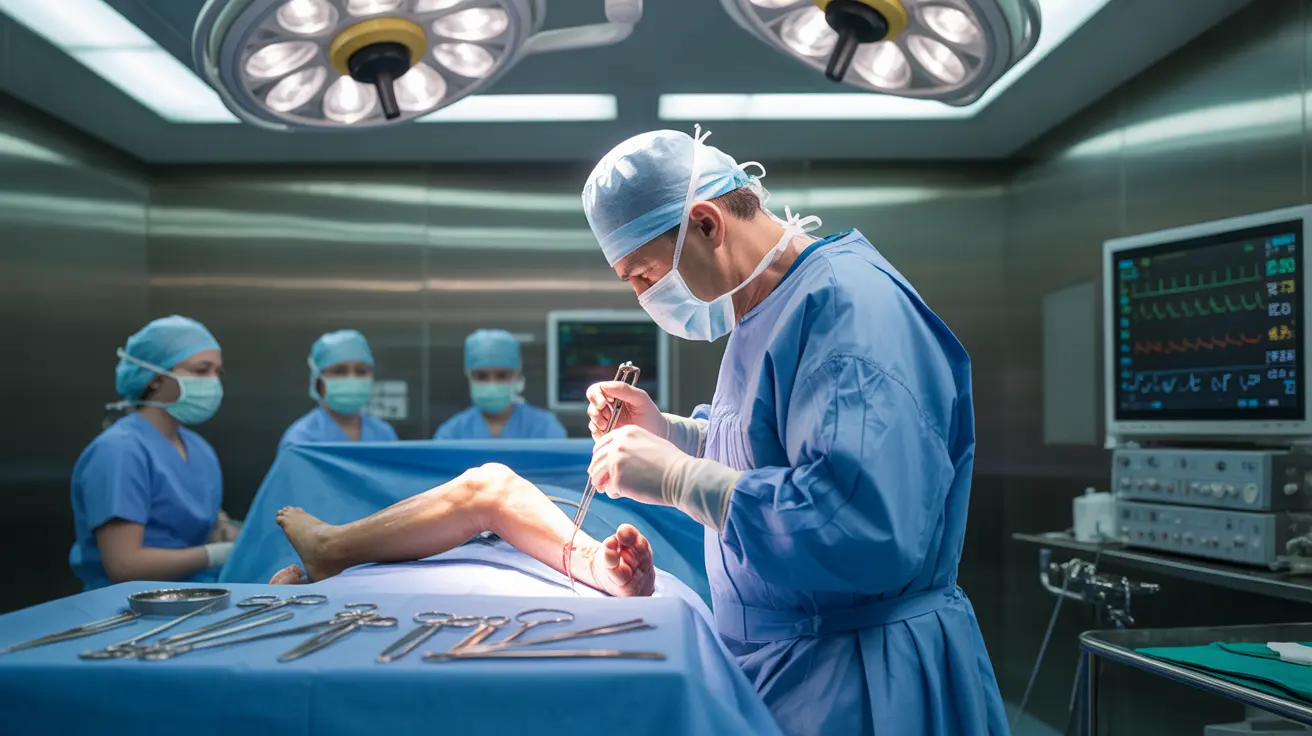Amputation surgery is a significant medical procedure that involves the surgical removal of a limb or extremity. While it can be a challenging and life-altering experience, modern medical advances have greatly improved both surgical techniques and post-operative outcomes. Understanding the process, from pre-surgical preparation through rehabilitation, can help patients and their families better prepare for this important medical journey.
Medical Conditions Leading to Amputation
Several medical conditions may necessitate amputation surgery. The most common reasons include:
- Severe trauma or injury
- Peripheral vascular disease
- Diabetic complications
- Cancerous tumors
- Serious infections
- Congenital conditions
Early intervention and proper medical management of underlying conditions can sometimes prevent the need for amputation. However, when amputation becomes necessary, it's often a life-saving procedure that can prevent further health complications.
The Surgical Process
Amputation surgery requires careful planning and precise execution. Surgeons determine the appropriate level of amputation based on several factors:
- Blood circulation in the affected limb
- Extent of tissue damage or disease
- Potential for healing
- Future prosthetic use considerations
The procedure typically involves careful tissue management, nerve treatment, and bone shaping to ensure the best possible outcome for prosthetic fitting and rehabilitation.
Recovery and Rehabilitation Process
Recovery from amputation surgery occurs in several phases:
Immediate Post-Surgical Care
The initial recovery period focuses on wound healing, pain management, and preventing complications. Medical teams closely monitor the surgical site and begin early mobility exercises when appropriate.
Physical Therapy and Rehabilitation
Rehabilitation typically begins within days of surgery and may include:
- Wound care and healing monitoring
- Range of motion exercises
- Strength training
- Balance and coordination activities
- Learning to use assistive devices
Managing Complications and Risks
While modern surgical techniques have improved outcomes, certain risks and complications can occur:
- Infection at the surgical site
- Phantom limb sensation and pain
- Blood clots
- Wound healing issues
- Psychological adjustment challenges
Healthcare teams work closely with patients to prevent and manage these potential complications through careful monitoring and appropriate interventions.
Prosthetic Options and Adaptation
Modern prosthetic technology offers various options for amputees:
Types of Prosthetics
- Basic mechanical prosthetics
- Microprocessor-controlled joints
- Custom-designed sports prosthetics
- Specialized occupational prosthetics
The selection of appropriate prosthetic devices depends on factors such as the level of amputation, lifestyle needs, and physical capabilities. Working with prosthetists and rehabilitation specialists helps ensure optimal fitting and function.
Frequently Asked Questions
What are the most common medical reasons that lead to amputation? The most common reasons include severe trauma, peripheral vascular disease, diabetic complications, cancerous tumors, and serious infections that cannot be controlled through other treatments.
How is an amputation surgery performed and what determines the level of limb removal? Surgeons determine the amputation level based on tissue viability, blood circulation, and potential for healing. The procedure involves careful management of bones, muscles, nerves, and blood vessels to create a functional residual limb suitable for prosthetic use.
What should I expect during recovery and rehabilitation after an amputation? Recovery involves initial wound healing, pain management, and progressive rehabilitation including physical therapy, strength training, and learning to use assistive devices or prosthetics. The process typically takes several months and requires dedication to rehabilitation programs.
What are the typical risks and complications associated with amputation surgery? Common risks include infection, phantom limb pain, blood clots, wound healing complications, and psychological adjustment challenges. Medical teams actively monitor and manage these potential complications throughout recovery.
How do prosthetic limbs work and what options are available for people after amputation? Modern prosthetics range from basic mechanical devices to advanced microprocessor-controlled systems. Options include different types of joints, materials, and control mechanisms. Selection depends on the individual's needs, lifestyle, and physical capabilities.




